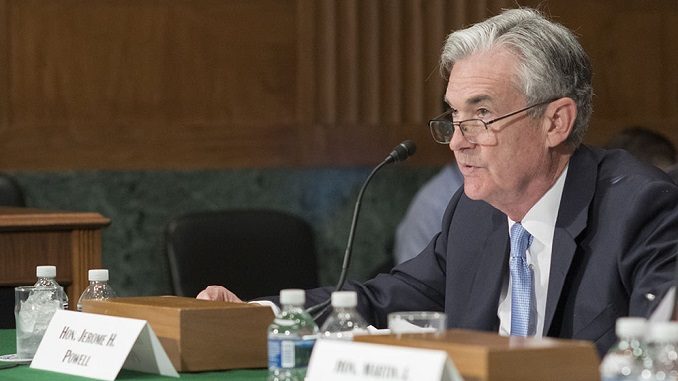
Federal Reserve officials on Friday laid the groundwork to take a break from raising short-term interest rates in coming months, propelling stock prices already cheered by a stronger-than-expected December jobs report, Wall Street Journal informed.
Fed Chairman Jerome Powell said mild inflation would give the central bank greater flexibility to set policy in the year ahead and that the Fed, which raised rates once every quarter last year, wasn’t on a “pre-set” path to push its benchmark rate higher.
“With the muted inflation readings that we’ve seen coming in, we will be patient as we watch to see how the economy evolves,” he said at a conference in Atlanta.
Central-bank officials had been reluctant to signal such a pause until recently because U.S. economic data have been strong and, until last fall, asset markets were buoyant, fueling worries about potential financial bubbles.
After their worst two-day start to a year since 2000, stock prices bounced back strongly on Friday, after Powell’s comments and the report showing employers added a robust 312,000 jobs last month. That combination mitigated investors’ worries about an economic slowdown.
Fed officials last month raised rates by a quarter percentage point to a range between 2.25% and 2.5% and penciled in two more increases in 2019 assuming the economy would continue to grow above the 1.9% trend they see as likely over the long run.
However, on Friday Powell said that officials were watching anxious financial markets and would adjust their plans if recent volatility caused the economy to slow more than anticipated. “We will be prepared to adjust policy quickly and flexibly and use all of our tools to support the economy should that be appropriate,” he said, speaking on a panel with former Fed leaders.
He also highlighted as an example the central bank’s actions in 2016, when worries over China’s economy fueled fears of a recession. The Fed dialed back its plans to raise rates several times that year, moving just once, in December.
Powell noted that markets have tumbled in recent weeks and aren’t expecting any Fed rate increases this year because investors are placing greater weight on risks to the outlook that haven’t yet shown up substantially in U.S. economic data.
According to him, those risks include slower global growth, weakness in China, trade tensions and “general policy uncertainty coming out of Washington.” U.S. data so far remains on track to sustain recent economic momentum, he said.
Bond yields slid two weeks ago after investors believed Powell wasn’t sufficiently sensitive to recent market developments. On Friday, Powell didn’t say whether or when the Fed planned to raise interest rates again.
Cleveland Fed President Loretta Mester said in an interview Friday that the central bank shouldn’t be in a hurry to raise rates now that inflation shows few signs of accelerating beyond the central bank’s 2% target and the Fed’s short-term benchmark rate is closer to a neutral setting designed to neither spur nor slow growth.
“I’m in a position now where I don’t feel there’s urgency,” she said. The focus on whether the Fed will raise rates one or two more times this year “is a little misplaced at this point,” she added. “We have time to look at the data as it comes in.”
Economists at JPMorgan Chase & Co. said they now expect the Fed to be on hold until July, and they expect two rate increases this year, down from an earlier projection of three, the Journal added.

Be the first to comment